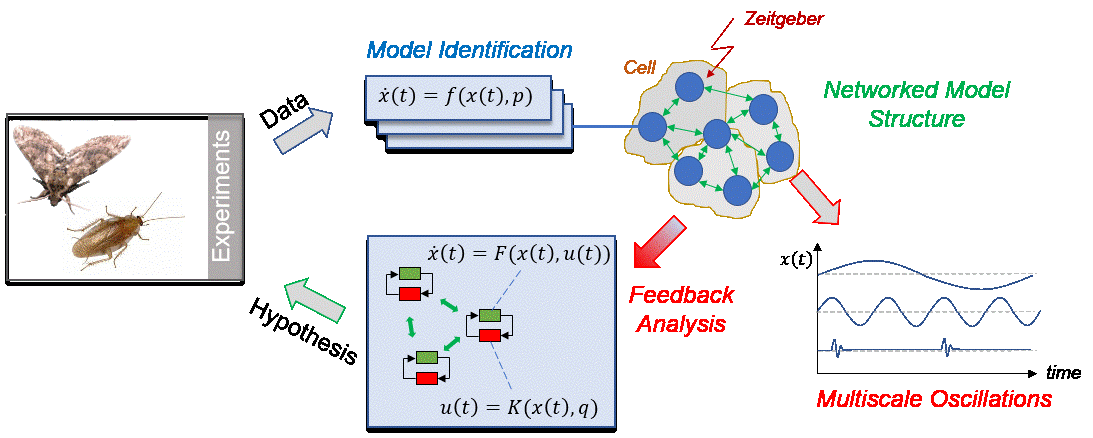Project 12
P12: System-theoretic analysis of feedback mechanisms in biological clocks using hierarchic networks of oscillators
Collaborators
Project description
This project uses model-based analysis as well as techniques from control and system theory to further the understanding of biological clocks: While the experimental work in other projects aims mostly at uncovering the local effects contributing to clocks, the objective of this project is to combine these effects into a global dynamic model. The particular approach is to develop a network of oscillator models ranging over different times-scales, thus encoding the frequencies observed for infradian over circadian to ultradian rhythms. While the starting point is experimental data observed in experiments of other projects for selected biological species, the ambition is here to set up a networked and hierarchic modelling framework that is able to represent the dynamics of biological clocks in a general sense.
Once the parametrizations of the models is adapted to data, the framework serves as basis for analysis. The focus is on identifying which embedded feedback mechanisms on different time-scales realize the oscillations with specific frequencies in the various nodes of the network, and on understanding how the interdependencies between the oscillators establish global rhythms. By analysis of stability and robustness, we aim at determining which mechanisms contribute to the remarkable ability of many species to maintain rhythms with constant frequencies even for significant changes of environmental conditions. The findings derived from the mathematical models will allow us formulate new hypotheses on properties of biological clocks which can be checked then in additional experimental work by the project partners from biology.

